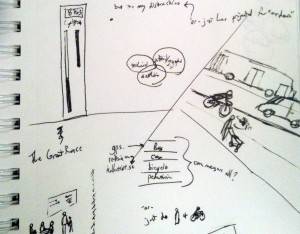“We need more multi-disciplinary… communication… social science… storytelling.” I was struck by the reoccurring mention of these terms while attending the National Council for Science and the Environment (NCSE) annual conference in Washington, D.C. in late January.
NCSE is a conference of scientists (primarily earth & physical scientists) who do highly specialized research related to environment and climate. At this year’s event, I presented as part of a MN-based symposium on “Artists as Partners in Infrastructure Education.” (More details on our symposium here.) It was refreshing to hear the desire for collaboration coming from both scientists and the worlds I inhabit — communication and creativity.
For research findings to be accepted and acted upon by communities, scientists and policymakers need to draw more personal ties between policies and how individuals interact with them. An important step in this is helping the public understand a bit more of the system (and the ‘why’) behind a particular policy. Because 65% of people are visual learners, and because graphics are an important method of showing complex systems, visuals are an excellent tool to help audiences relate to and connect with content. It’s why at science conferences, you’ll find me advocating for design, creativity and the arts. At design conferences, I’m the advocate for science, data and content!
Our symposium group hopes to continue the dialogue of how artists can contribute to the great work these scientists are already doing — and help give their findings a relevant and emotional hold on communities around the world.
– Arlene








 It’s not hard to believe, given the events of the past year, to see how people do not make decisions based purely on fact. Appeals to our personal beliefs and emotional centers are important. Data alone does not influence decisions. To a large portion of society,
It’s not hard to believe, given the events of the past year, to see how people do not make decisions based purely on fact. Appeals to our personal beliefs and emotional centers are important. Data alone does not influence decisions. To a large portion of society, 


